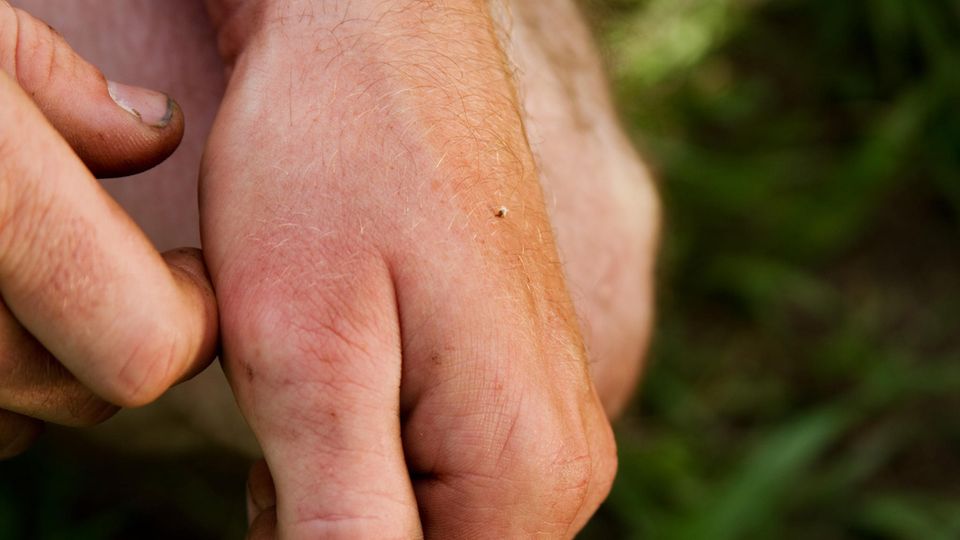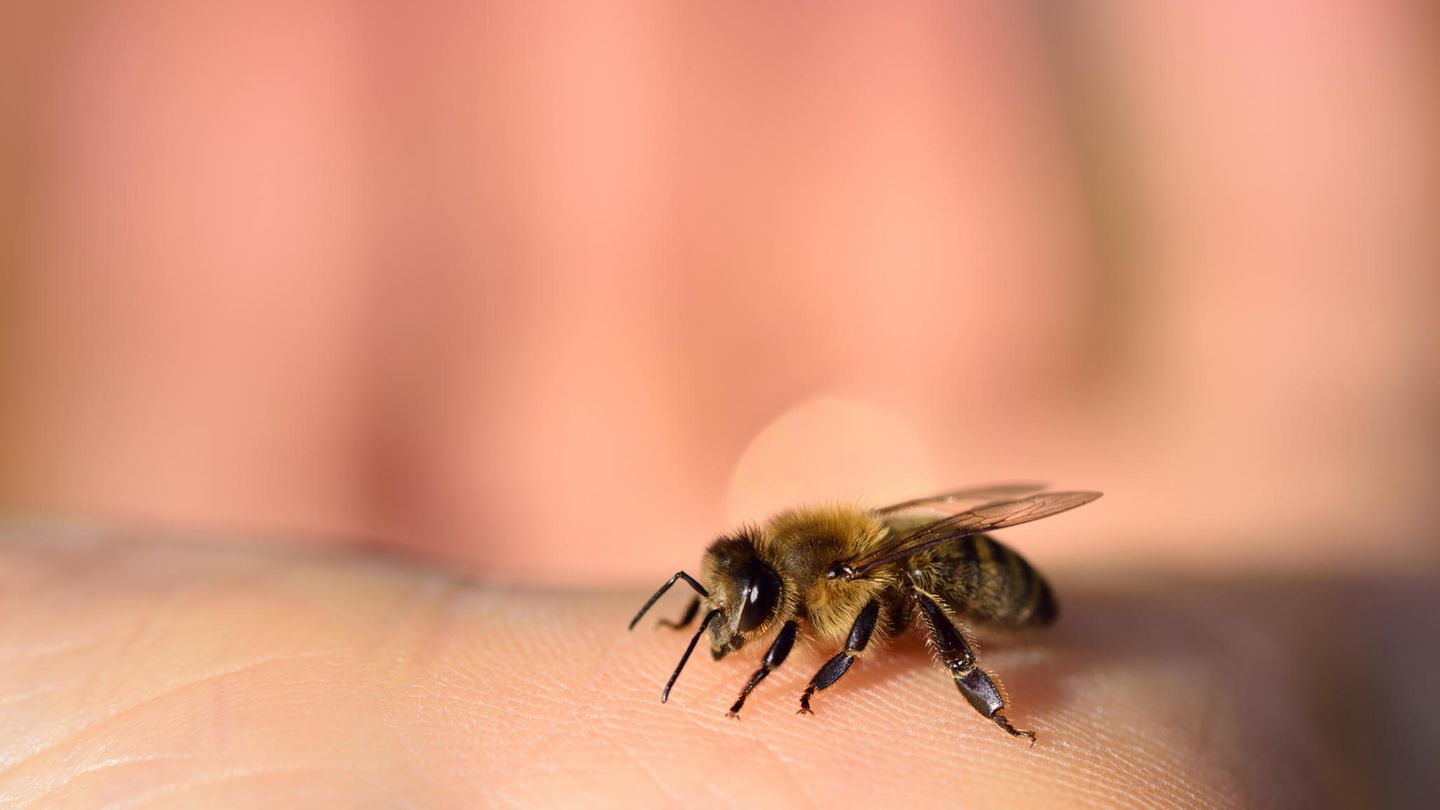If you accidentally step on a bee, you can easily get stung. A bee sting can be very painful. What helps and when a visit to the doctor is advisable.
A small sting is still in the skin. It burns like fire, it throbs around the sting site and it gets hot. This is what happens when a bee stings. It then administers a dose of poison with the sting, which can be very painful. In addition to sharp pain, there can be discoloration of the skin around the sting site, itchy skin and swelling around the sting. In itself, such a sting is harmless to humans. Except for people with an allergy – for them, even a sting can be life-threatening. How to recognize an allergic reaction and what you should pay attention to after a bee sting:
1. Stay calm
Even though a bee sting can be very painful, you should remain calm. Bees only sting to defend their colony or when they panic. The bee cannot sting a second time – the bee dies after the sting.
2. Remove the sting
A bee sting is very easy to distinguish from a wasp sting: if a bee stings, the stinger, including the venom sac, remains stuck in the human skin. The venom sac can allow further venom to enter the body via the sting site. Therefore, remove the stinger as quickly as possible. The best way to do this is with your fingernail or a blunt object such as a credit card or butter knife. Scrape the skin with it and remove the stinger. Important: Do not use tweezers to pull out the stinger. Squeezing it will only cause more venom to end up in the body, says the American Academy of Dermatology Association.

3. Disinfect
Clean the wound with soap and water. You can also use a wound disinfectant.
4. Cooling
Cooling helps to prevent swelling and relieve itching. Cold compresses or ice packs from the freezer can be used for this. However, these should not be placed directly on the skin; instead, they should be wrapped in a clean tea towel and then placed on the puncture site.
5. Elevate
Elevate the affected area – this can also reduce swelling.
6. Painkillers for relief
Painkillers such as ibuprofen or paracetamol can relieve the pain after a sting.
7. Observe the injection site and watch for allergy symptoms
The sting site and the physical reaction should be observed. Swelling around the sting site is normal. However, if the swelling spreads to other parts of the body, such as the neck or face, you should call 112 or go to an emergency room – it could be an allergic reaction. Other symptoms of an allergic reaction to bee venom can include breathing problems, dizziness, vertigo, a rapid pulse, skin reactions all over the body, stomach cramps, nausea and diarrhea. An allergic reaction is an emergency. Even a single sting can lead to a life-threatening situation.
What should you do if a bee stings you in your mouth or throat?
A bee sting in the mouth area is extremely rare, but dangerous. The mucous membranes can swell, which can endanger the air supply. In this case, the emergency services should be called. Sucking on ice cubes can be used as an emergency measure until the emergency services arrive.
Impending plague
How to avoid wasps stinging
When should I see a doctor after a bee sting?
Insect bites in the eye area should be examined by a doctor as a precaution. If symptoms worsen, do not improve, or fever occurs after the bite, it is advisable to visit a doctor’s office. A doctor should also examine the bite site if a large area around it is red and swollen.
Sources: , , , , ,
Source: Stern
I’m Caroline, a journalist and author for 24 Hours Worlds. I specialize in health-related news and stories, bringing real-world impact to readers across the globe. With my experience in journalism and writing in both print and online formats, I strive to provide reliable information that resonates with audiences from all walks of life.




